a rectangular loop, as shown in Fig. 3.66, moves away from an infinitely long wire carrying a current I. Find the emf induced in the rectangualr loop.
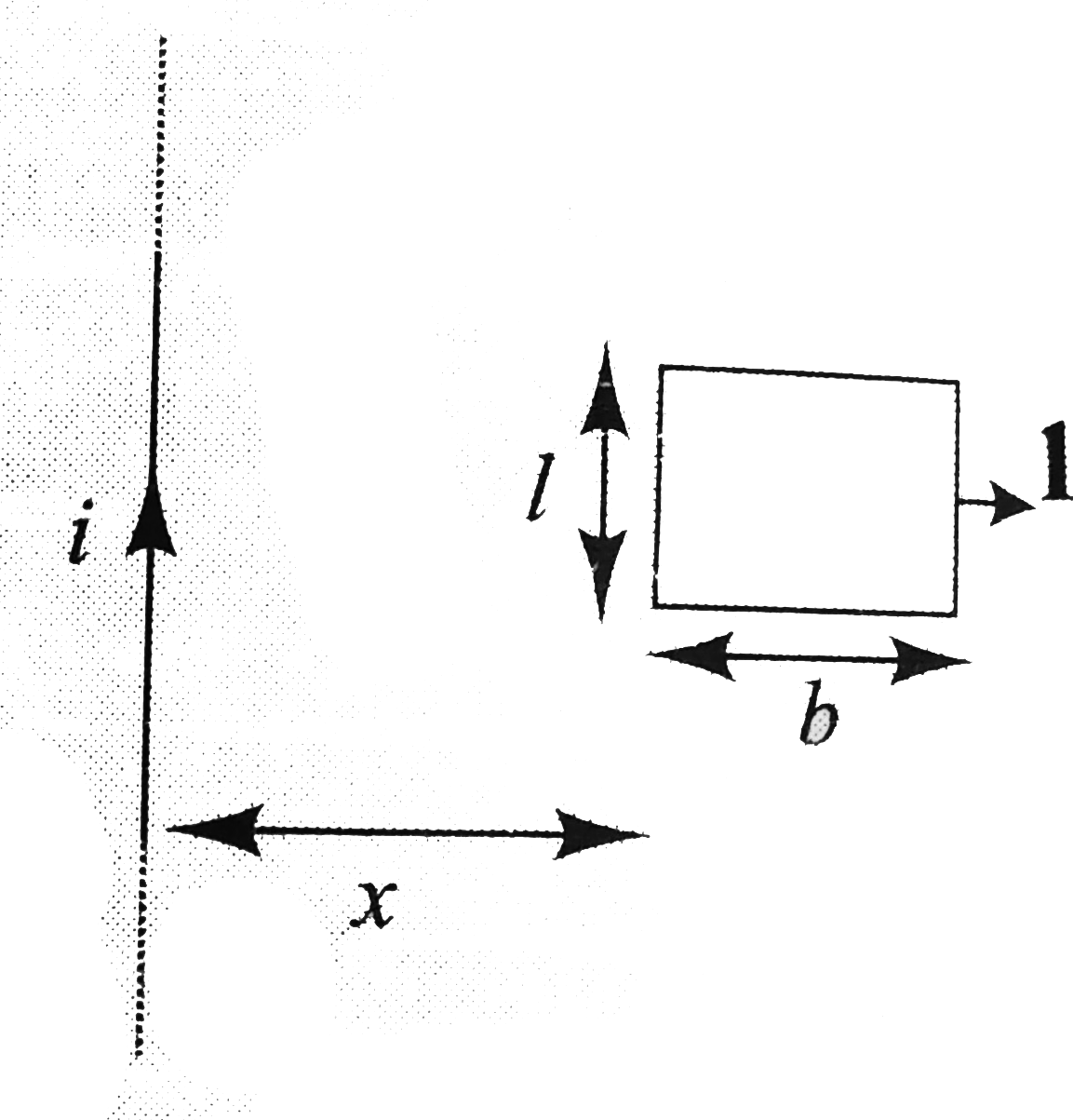
E=B1LV−B2LV=μ0i2πxLv−μ0i2π(x+b)Lv=μ0iLbv2πx(x+b)
Aliter:
Consider a small segment of width dy at a distance y from the wire.
Let flux through the segment be dϕ.
∴dϕ=μ0i2πyLdy
∴ϕ=μ0iL2πx+b∫xdyy=μ0iL2π(ln(x+b)−lnx)
Now dϕdt=μ0iL2π[1x+bdxdt−Ixdxdt]=μ0iL2π[(−b)x(x+b)]v=−μ0ibLv2πx(x+b)
∴ induced emf=−μ0ibLv2πx(x+b)
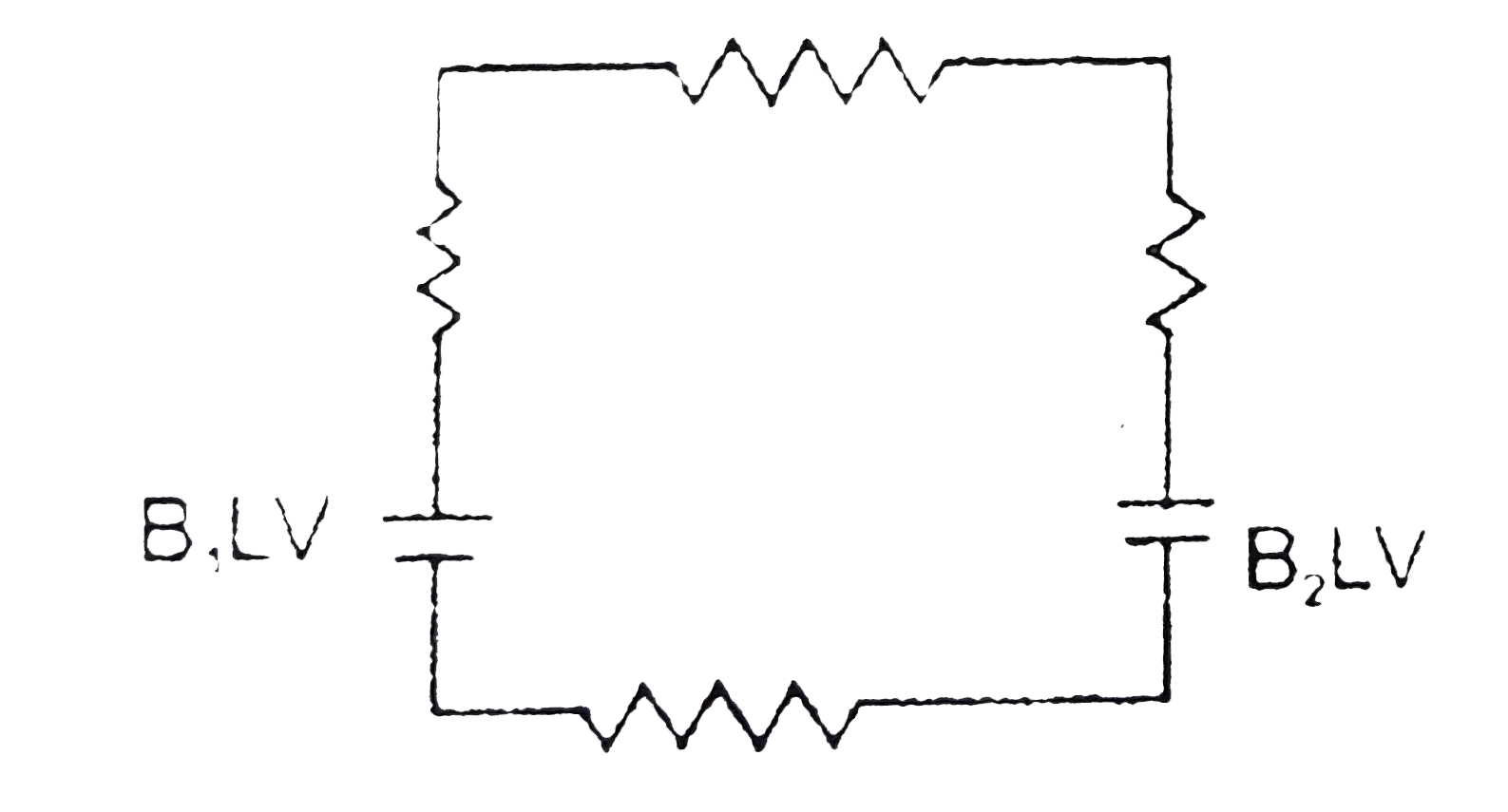
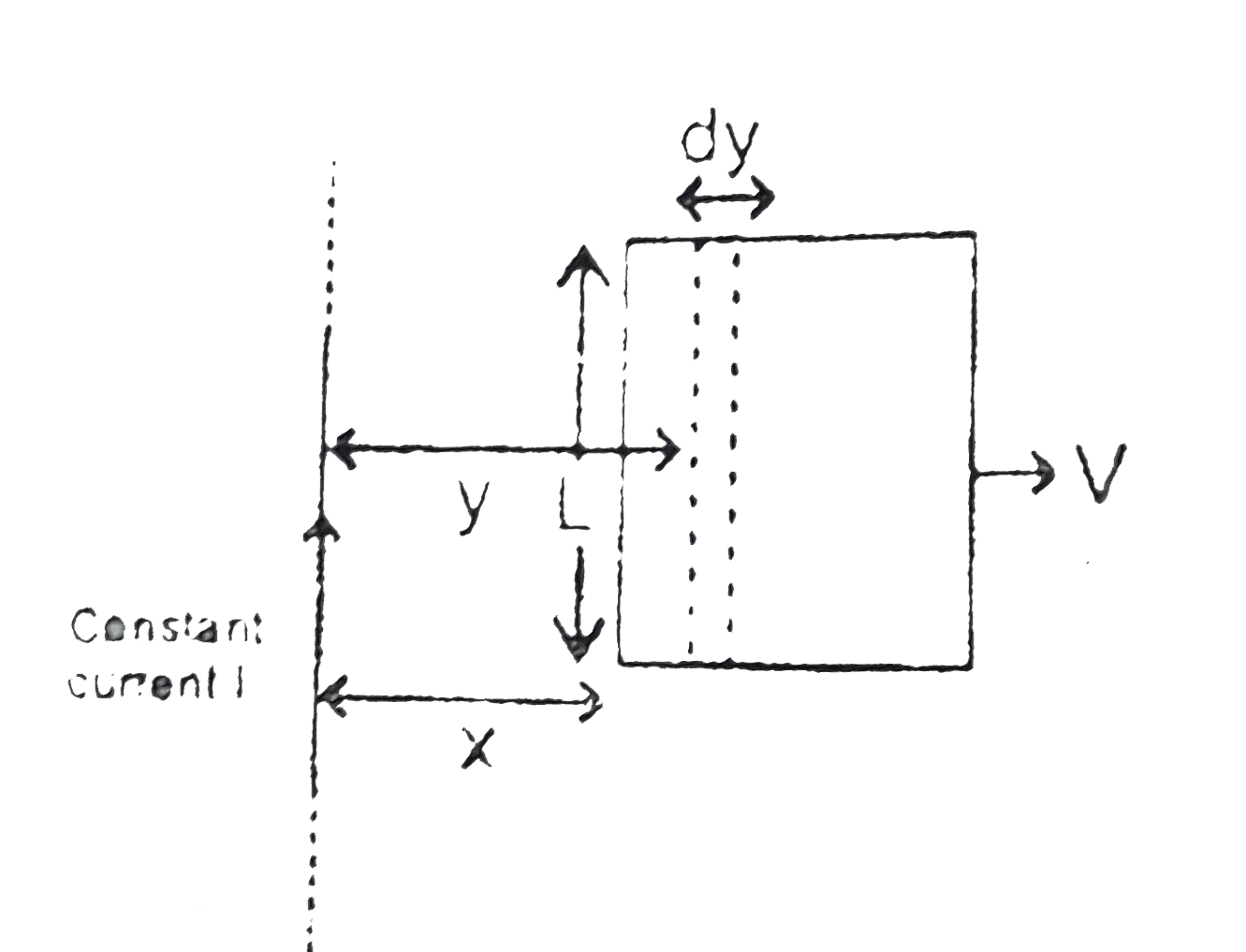
Topper's Solved these Questions
- ELECTROMAGNETIC INDUCTIONBook:RESONANCE ENGLISHChapter:ELECTROMAGNETIC INDUCTIONExercise:Problem
Explore 12 Videos
- ELECTROMAGNETIC INDUCTIONBook:RESONANCE ENGLISHChapter:ELECTROMAGNETIC INDUCTIONExercise:Exercis-1
Explore 63 Videos
- ELECTRODYNAMICSBook:RESONANCE ENGLISHChapter:ELECTRODYNAMICSExercise:Advanced level problems
Explore 31 Videos
- ELECTROSTATICSBook:RESONANCE ENGLISHChapter:ELECTROSTATICSExercise:HLP
Explore 40 Videos
Similar Questions
A rod of length l is rotating with an angular speed ω about one of its ends which is at a distance a from an infinitely long wire carrying current i. Find the emf induced in the rod at the instant shown in .
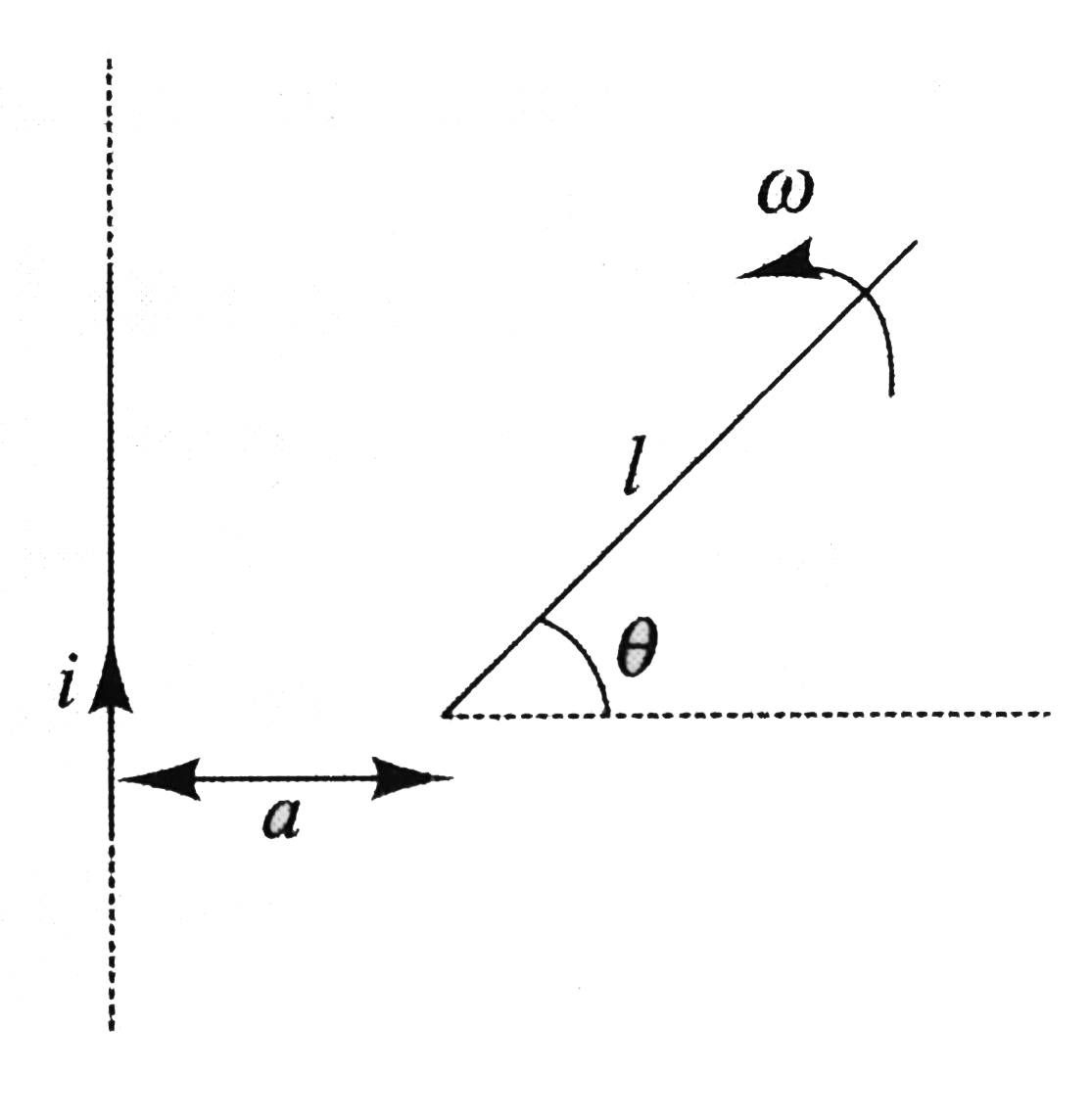
View SolutionA rod of length l is rotating with an angular speed ω about its one end which is at a distance a from an infinitely long wire carrying current i.Find the emf induced in the rod at the instant shown in the figure.
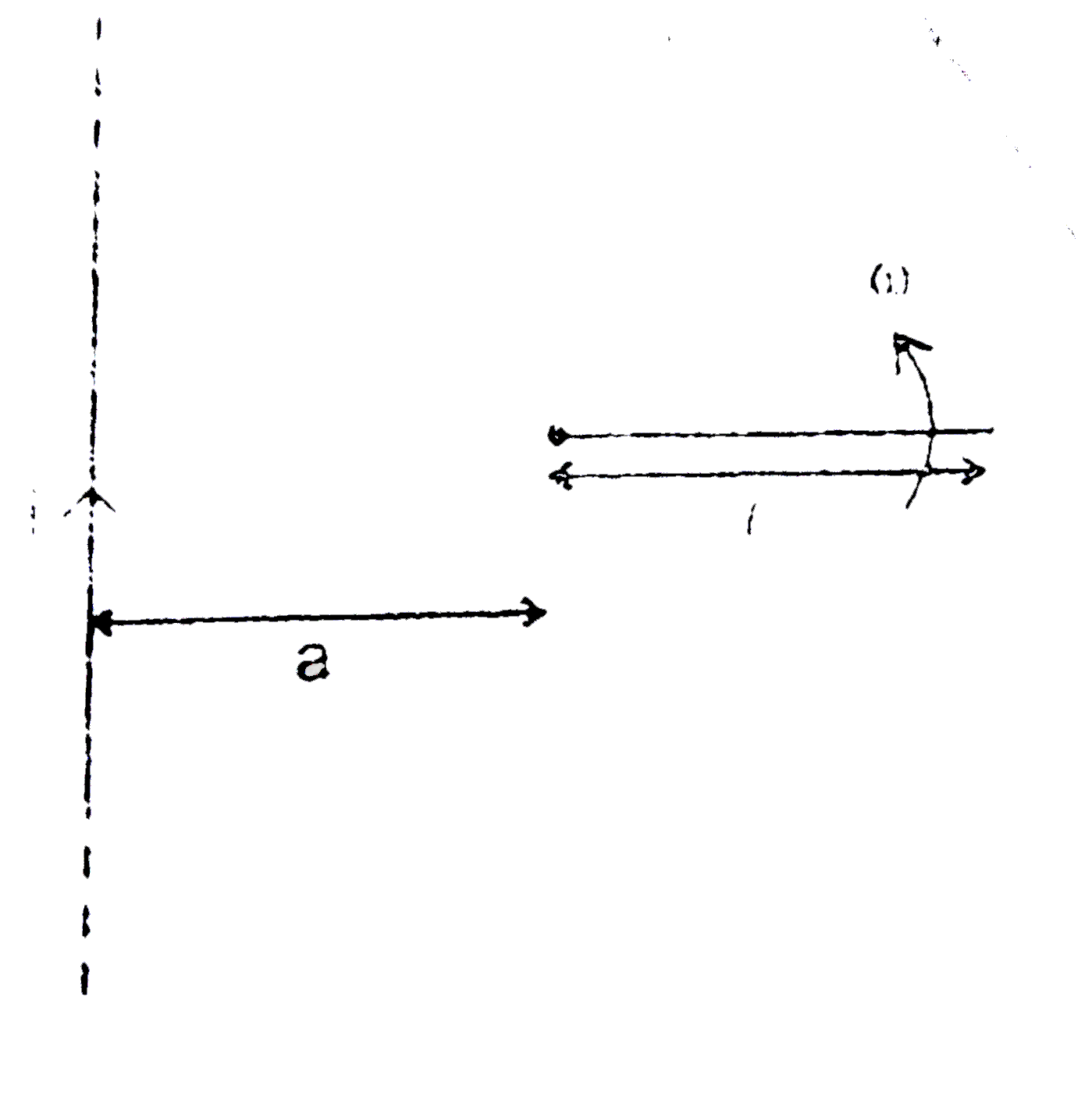
View SolutionA rectangular loop is moving parallel to a long wire carrying current i with a velocity v. Find the emf induced in the loop (Fig. 3.68) if its nearest end is at a distance a from the wire. Draw equivalent electrical diagram.
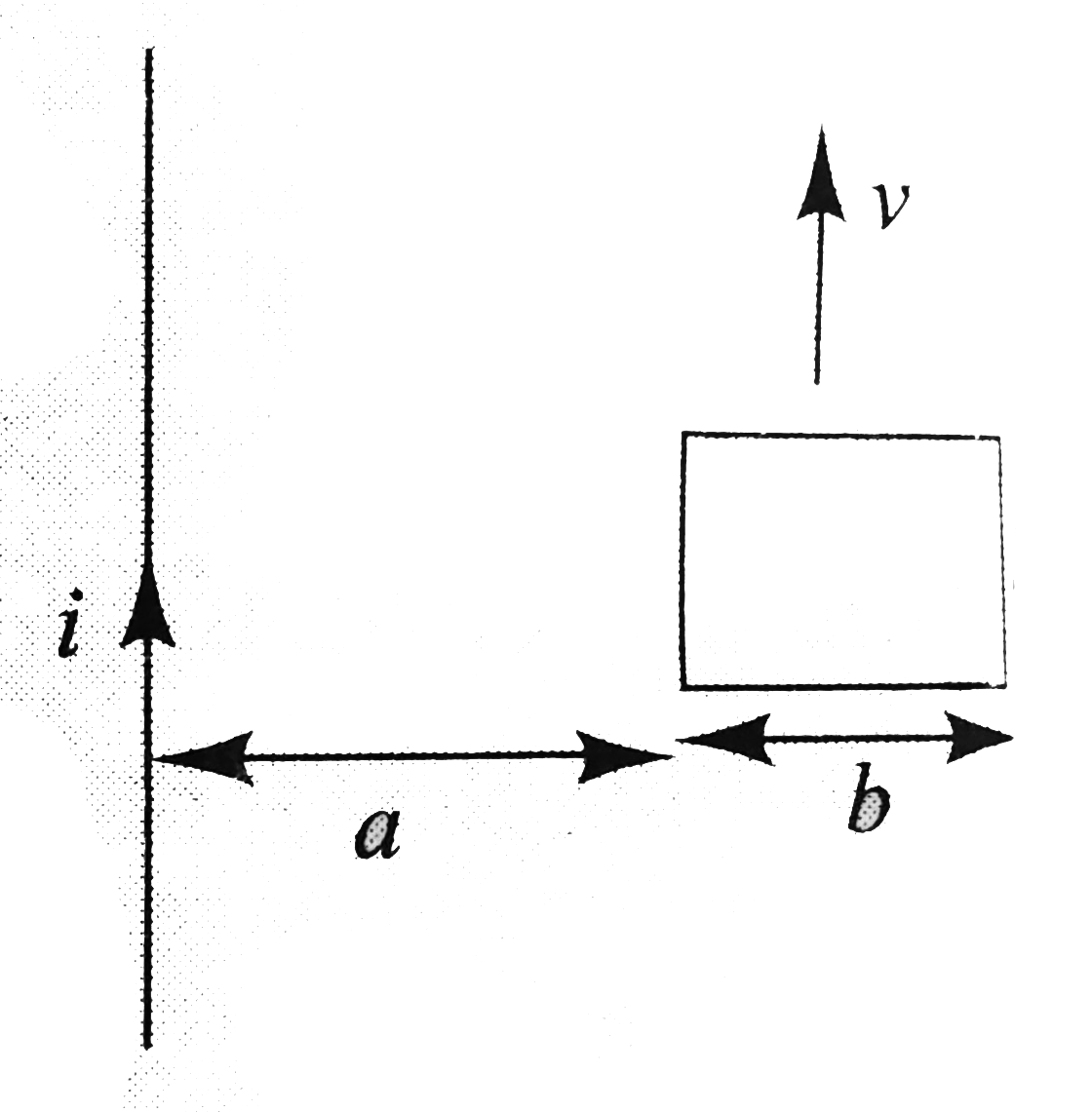
View SolutionA rectangular loop is moving parallel to a long wire carrying current i with a velocity v. Find the emf induced in the loop (Fig. 3.68) if its nearest end is at a distance a from the wire. Draw equivalent electrical diagram.

View SolutionA rectangular loop of length 'l' and breadth 'b' is placed at a distance of x from an infinitely long wire carrying current 'i' such that the direction of current is parallel to breadth. If the loop moves away from the current wire in a direction perpendicular to it with a velocity 'v', the magnitude of the e.m.f. in the loop is: (μ0= permeability of free space)
View SolutionConsider an infinitely long wire carrying a current I (t),
With dIdt=λ = constant . Find the current produced in the rectangular loop of wire ABCD if its resistance is R, Fig
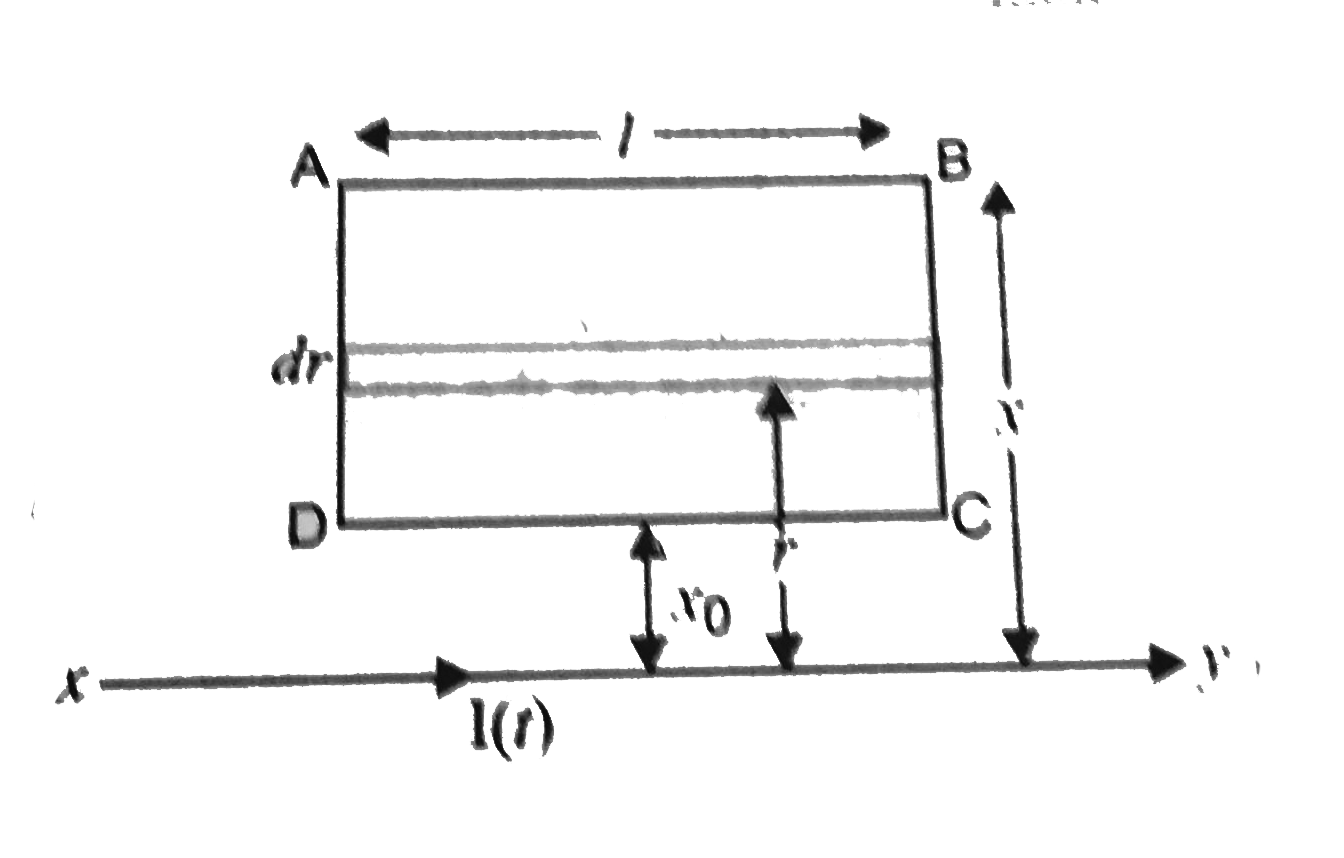
View SolutionA rectangular loop of wire with dimensions shown in figure is coplanar with a long wire carrying current 'I'. The distance between the wire and the left side of the loop is r. The loop is pulled to the right as indicated. What are the directions of the induced current in the loop and the magnetic forces on the left and right sides of the loop when the loop is pulled ?
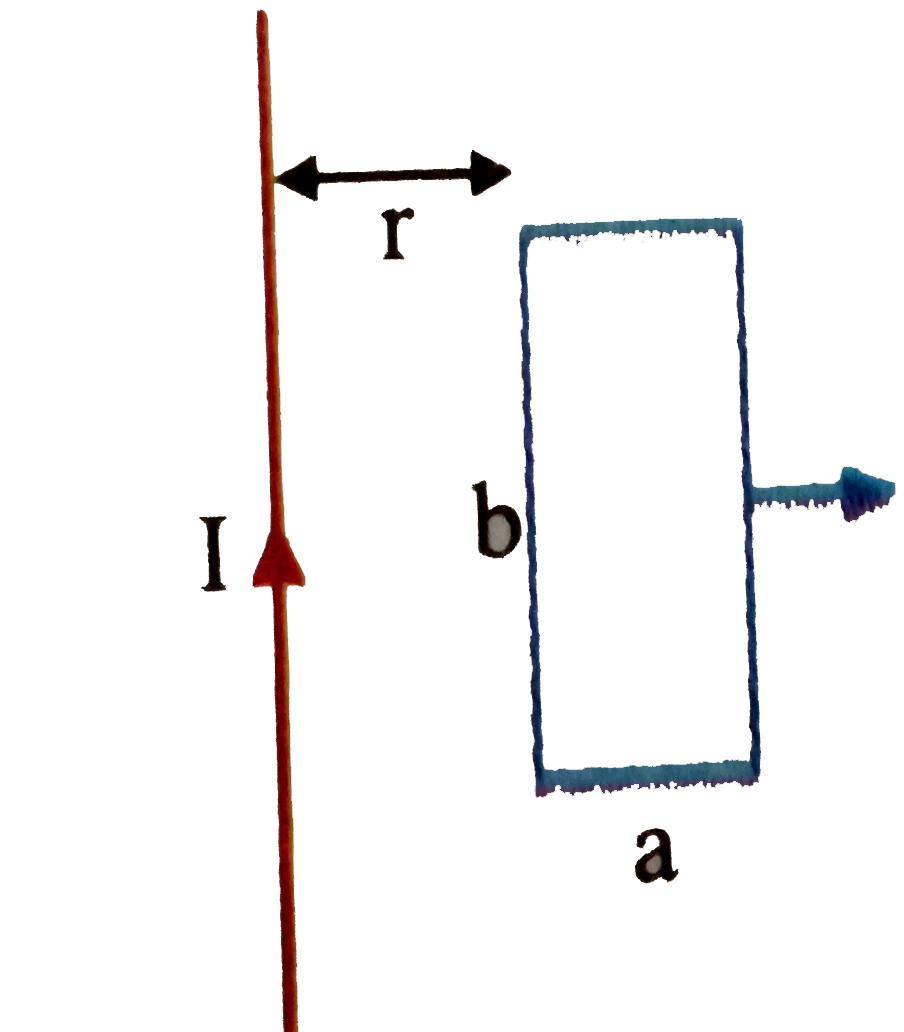
View SolutionA circular loop of wire is in the same plane as an infinitely long wire carrying a consatnt current i. Four possible motions of the loop are marked by N.E.W and S as shown
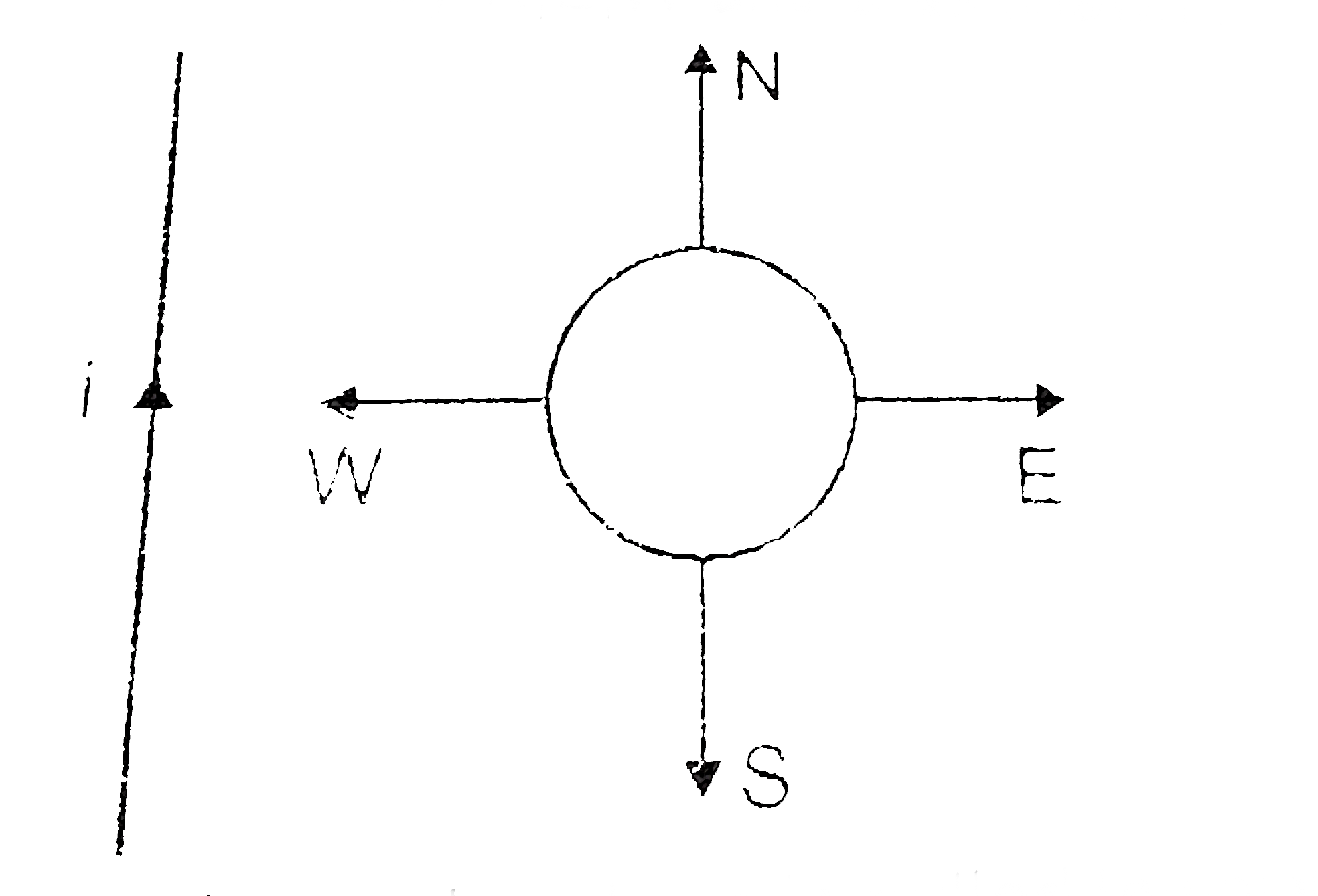
A clockwise current is induced in the loop when loop is pulled towards :
View SolutionA current carrying straight wire passing inside a triangular loop as shown in Figure. The current in the wire is perpendicular to paper inwards. Find the direction of the induced current in the loop if current in the wire is increased.

View SolutionWire 1 in Fig. is oriented along the y-axis and carries a steady current I1. A rectangular loop located to right of the wire and in the x-y plane carries a current I2. Find the magnetic force exerted by wire (1) on the top of wire (2) of length b in the loop, labeled "wire (2)" in the figure.

View Solution